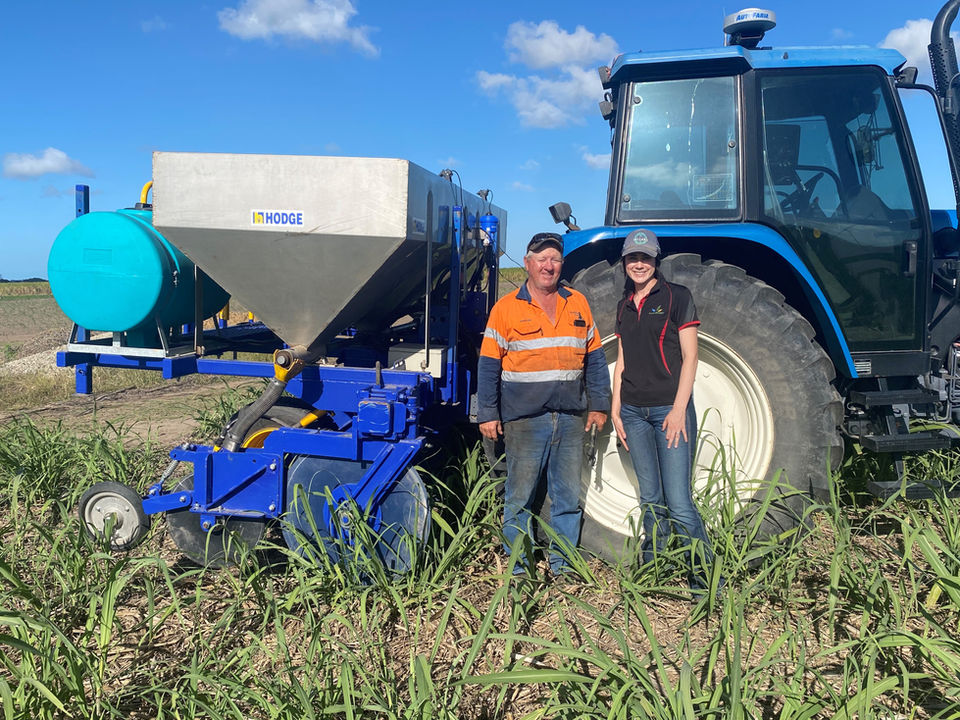
Agricultural landscape
The connectivity of the natural wetland landscape in the Mackay Whitsunday region has profoundly changed, resulting in a greater volume of terrestrial runoff flowing out into the marine environment.
Before agricultural development, the coastal floodplains were swampy vegetated areas where flood waters would remain on the land for extended periods. But historical government schemes were rolled out to expand agriculture – clearing land and developing dams and weirs.
Over 80% of wetlands and vegetation on the floodplain in the Mackay Whitsunday’s Pioneer and Plane basins have been cleared, removing natural sponges that once slowed water flow and trapped soils and nutrients. Without these buffers, runoff is more likely to carry higher levels of sediments, nutrients and pesticides into waterways. These changes have made it more challenging for growers to manage fertiliser and pesticide runoff from paddocks.
Environmental challenges
The Mackay Whitsunday region is renowned for its diverse Island Groups like the Whitsunday Islands, tropical beaches, significant national parks, cultural sites, fringing coral reefs, seagrass meadows, and mangroves. The marine ecosystems are pivotal to the region's global reputation but vulnerable to the impacts of poor water quality.
The sugarcane industry, alongside other agriculture, mining and ports, is intricately linked to the needs of tourism, forming the backbone of the community and local economy. Growers are under significant pressure to maintain water quality, which is vital for preserving natural assets that are important for local tourism.
Pesticide levels remain high
Growers rely on pesticides for productive crops, targeting destructive insects and controlling weeds. However, the region’s strong history of rigorous water quality monitoring at paddocks and streams have revealed concerning pesticide concentrations in waterways, with certain chemicals exceeding ecosystem protection guidelines.
During farming, pesticides can be lost into the landscape through spray drift, mixing site spills, flushing and cleaning spray tanks, deep drainage and paddock runoff. The intricate network connecting waterways, wetlands, and groundwater facilitates the movement of runoff between these waterways.
While levels remain high across the region, growers in some localised creeks have adjusted farming practices – resulting in a downward trend in these targeted waterways. For example, growers in the Brightly area, within the Sandy Creek catchment, have conducted extensive water quality monitoring to understand their pesticides. This directly led to noticeable decreases in pesticide levels, as seen in the monitoring results.
Risks to marine ecosystems
The marine ecosystems of the Mackay Whitsunday region face significant threats from poor water quality and climate-related disturbances. Inshore seagrass meadows and coral reefs, including those near Round Top and Flat Top Islands less than 10 km offshore, are highly vulnerable to herbicide exposure and nutrient increases.
Declines in water clarity and rising nutrient levels in the inner passage of the Whitsundays have hindered coral reef recovery after disturbances, including Tropical Cyclone Debbie in 2017.
Valuable freshwater and estuarine wetlands, such as the nationally significant Goorganga complex, are also under pressure from agricultural contaminants – contributing to fish kills, algae blooms, invasive weeds, and altered fish populations. Maintaining good water quality is essential for ecosystem recovery and resilience in this region.
Reducing runoff can improve farm productivity
Good land management benefits both farms and the environment. Adopting advanced farming practices to retain fertilisers and pesticides on crops can improve productivity and profitability, ensuring better outcomes for growers and the environment.
Effective use of machinery reduces ground compaction, enhancing water infiltration for better soil health.
When precision technology is used to apply fertilisers and pesticides, the use and cost of these products are reduced.
By accounting for organic nutrients added to the paddock, such as from fallow crops and mill mud, synthetic fertiliser application rates are lowered. This strategy optimises fertiliser rates, which can increase crop yields and reduce input costs.
How can growers adopt improved practices?
Growers play a pivotal role in controlling the amount of nutrients and pesticides lost from paddocks. The Mackay Whitsunday Water Quality Program allows growers to understand their losses and take control of management practices to directly reduce paddock runoff.
Growers are also leading enhanced pesticide management practices, providing a proven model for other growers to adopt:
Understanding product losses: Extensive water quality monitoring data consistently highlight most fertiliser and pesticides are lost from paddocks in the first few runoff events of the wet season which follow recent application.
Fertiliser management: Growers manage fertiliser application methods and product choices carefully, focusing on timing, rates, placement, and selection. On-going paddock trials are constantly refining these. Some growers are also using software to calculate rates, factoring in legume fallow crops and soil conditioners like mill mud.
Pesticide management: Growers are increasingly aware of improved pesticide management practices, guided by the Pesticide Decision Support Tool, which recommends products with lower environmental risk. New technologies enable more targeted pesticide application, reducing the total amount used on paddocks. Growers are also upgrading spray equipment to the latest drift reduction nozzles and application technology and undertaking specialised spray training.
Protecting and enhancing wetlands: Scientists are helping growers and land managers learn more about how wetlands work as treatment systems in capturing nutrient and sediment runoff.











